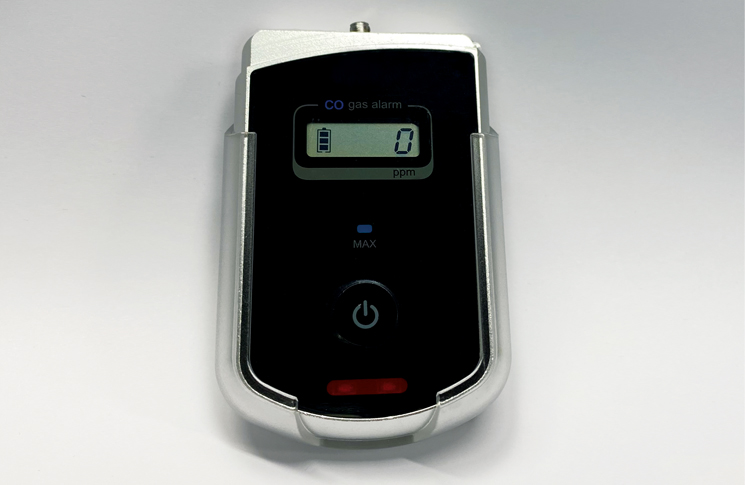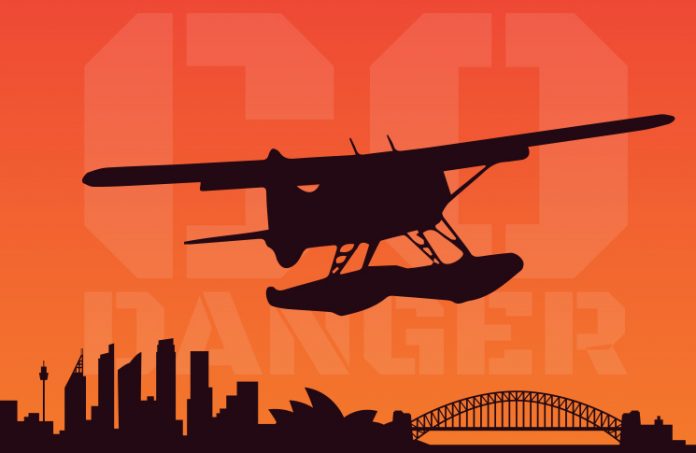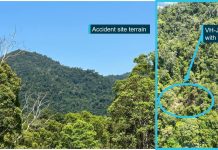An insidious enemy that brought down a tourist seaplane on New Year’s Eve 2017 lurks in every piston-engine aircraft
The operator was a well-regarded organisation which met, and in many cases exceeded, the regulatory requirements. It had recently passed a CASA audit with no safety concerns raised.
The pilot had a reputation for being diligent, methodical and conscientious, with a high standard of physical fitness and regular sleep hours. The only enemy to pass these formidable organisational and personal defences was stealthy and insidious.
It specialised in silent killing while leaving almost no trace. It was carbon monoxide (CO), a colourless, odourless gas created by combustion in engines that, when breathed, displaces oxygen in the bloodstream.
On the afternoon of 31 December 2017, a de Havilland Canada DHC-2 Beaver seaplane was flying diners from a waterside restaurant near Berowra, north of Sydney, back to the city when it crashed in nearby Jerusalem Bay. The pilot and 5 passengers were killed.
The ATSB report found the pilot and passengers on the aircraft all had elevated levels of carboxyhaemoglobin (COHb) in their blood, indicating exposure to carbon monoxide.
It specialised in silent killing while leaving almost no trace. It was carbon monoxide.
‘As a result, the pilot would have almost certainly experienced effects such as confusion, visual disturbance and disorientation. Consequently, it was likely that this significantly degraded the pilot’s ability to safely operate the aircraft.’
After returning to the restaurant mooring and boarding the passengers about 3 pm, the pilot began the return flight. The ATSB analysed photographs taken by spectators and one of the deceased passengers to reconstruct the aircraft’s flight path. It made a turn of about 270 degrees at low altitude and flew into Jerusalem Bay, ‘a known confined area’ in the words of the report.
The aircraft flew towards the end of the bay at lower than the height of the surrounding terrain, then made a steep turn to the right, during which it stalled and crashed, killing all onboard.
However, the ATSB found the aircraft was capable of turning within the bay and could have safely turned back earlier. At the point where it made its steep turn, there was sufficient distance remaining to land on the water, and the steep turn was made at low level and at greater a bank angle than was required.
About carbon monoxide poisoning the report says, ‘The physical symptoms and cognitive effects of CO exposure generally start to occur at COHb levels about 10 per cent. This includes headaches, nausea, dizziness, confusion, and disorientation. These will become more severe with increasing COHb levels and duration. In this case, the pilot was almost certainly experiencing some, if not all of these.’
A concentration of 11 per cent (+/- 0.5 per cent) was found in the pilot’s remains. The passengers had concentrations between 4 per cent and 10 per cent. Individual reactions to carbon monoxide vary but physical symptoms usually occur at 10 per cent and mental processing becomes impaired at levels of about 3 per cent.

The ATSB investigation found several pre-existing cracks in the engine’s exhaust collector ring, had very likely released exhaust gas into the aircraft’s engine bay, and that this gas very likely entered the cabin through holes in the main firewall where 3 bolts were missing from the magneto access panels. Examination of the wreckage also found other bolts in place to secure the panels were worn and were a combination of modified approved bolts and non-specific bolts.
The cracks and holes had combined with an unusual circumstance, the ATSB found. The report found the pilot, after dropping his passengers for their meal, had left the mooring and taxied the aircraft for 27 minutes, due to the arrival of another seaplane at the mooring. This was ‘considerably longer’ than the normal pre-flight taxi, the ATSB reported. As it was a warm day, the pilot had kept the cockpit door open. But the breezes that cooled him also carried carbon monoxide, as a recreation done for the investigation found out. The investigators ran a test, simulating the aircraft taxiing with its door open and 3 firewall bolts missing. ‘Having the pilot’s door ajar drew even more smoke into the cabin through the bolt holes in the access panel,’ the ATSB concluded.
After its challenging three-year investigation, using innovative techniques including flight path reconstruction from digital photos, the ATSB formally recommended the International Civil Aviation Organization and CASA consider making lightweight recording devices mandatory for smaller passenger-carrying aircraft.
‘Advancements in technology have made self-contained image, audio and flight data recording systems far more cost-effective and accessible to all aircraft,’ ATSB Chief commissioner Greg Hood said.
Detect and survive
The ATSB found the aircraft had been fitted with a disposable carbon monoxide chemical spot detector. This $A10 cardboard indicator would change colour in the presence of carbon monoxide, perhaps alerting the pilot. It was not a required fitting and sun bleaching meant it was likely not effective on the accident flight.
The investigators said chemical spot detectors have known limitations and can be unreliable at detecting carbon monoxide in the cabin. ‘Further, they are a passive device that relies on the pilot regularly monitoring the changing colour of the sensor to detect elevated levels of CO,’ they said. A chemical
spot detector relies on close monitoring of subtle changes by the pilot, at the same time as carbon monoxide is degrading the pilot’s mental capabilities, including those of subtle observation and interpretation.
In other words, a carbon monoxide leak is a catch-22 situation: it requires mental sharpness to detect but its effect on the brain is to destroy that sharpness.
A pilot who survived a carbon monoxide leak in a Mooney in 1996 described the paralysing effect of the poison.
‘Its effect removes urgency and one just is unable to assimilate reality. One experiences what could be described as an altered state of conscious awareness, rapidly moving to coma. Original thinking and problem-solving is impossible.’
The ATSB said, ‘Given the subtlety of some of the physical symptoms and cognitive effects of CO exposure, there was no trigger for the pilot to take immediate action to reduce the risk of further CO exposure to those on board, before adversely affecting the pilot’s ability to safety operate the aircraft.’
A carbon monoxide leak is a catch-22 situation: it requires mental sharpness to detect but its effect on the brain is to destroy that sharpness.
The ATSB said electronic active warning carbon monoxide detectors designed to attract the pilot’s attention through auditory and/or visual alerts would be more likely to be effective.
The ATSB strongly encourages operators and owners of piston-engine aircraft to install a carbon monoxide detector with an active warning to alert pilots to the presence of elevated levels of carbon monoxide in the cabin. If not provided, pilots are encouraged to carry a personal carbon monoxide detection and alerting device. Active warning detectors cost between $A130 and $A500.
The ATSB has recommended CASA consider making active warning carbon monoxide detectors mandatory in piston-engine aircraft, particularly in passenger-carrying aircraft.
Occasionally a $10 stick-on carbon monoxide detector proves its worth, as happened over Sellicks Beach in South Australia on 22 December 2019. A Cessna 172 was on a shark-spotting flight with a crew of 3 when they experienced nausea, headaches, fatigue and light headedness. At first they thought turbulence had upset them, until the pilot looked down to the darkened dot in the carbon monoxide detector. The front seat crew member confirmed this and they immediately opened the windows and switched off the cabin heating. Despite these measures, the pilot was too mentally addled by the gas to be able to follow through with ATC’s offer for a landing at Adelaide, the closest airport, and they flew on to Parafield, where the aircraft landed safely.
Examination could find no leak in the aircraft’s exhaust, but in hospital all crew members showed mildly elevated COHb levels. They had experienced unpleasant symptoms but were not too physically or mentally debilitated to check the stick-on indicator. An active warning detector might have alerted the crew before they became sickened. It’s equally possible for pilots to pass straight into unconsciousness without experiencing nausea or headaches.
What to do
Before it kills you, carbon monoxide will make you drowsy and stupid. A well memorised drill is the other essential part of your defence against it. You will need to react immediately.
An effective emergency drill may contain the following elements:
REACTION
- turn cabin heat fully off
- select maximum fresh air ventilation to cabin
- open windows if the environment, flight profile and operating manual permit
- use supplemental oxygen if it’s available and if doing so does not introduce another safety or fire hazard
- land as soon as possible
- tell ATC of your concerns and intentions
- select a leaner fuel mixture if possible.
AFTER LANDING
- seek medical attention at once
- before continuing the flight, have the aircraft inspected by a LAME.
Read Ghosts in the machine at flightsafetyaustralia.com – find out how accident investigation has embraced the digital age with cameras, phones and tracking systems as witnesses.
Read the ATSB report here.






I have purchased a portable smart sensor handheld carbon monoxide metre, with LCD sound & light Alarm 0-1000ppm. Powered by 3 AAA 1.5v alkaline batteries, lasting for over12 months averaging 1.5 hr flying per week.
Clipped on my LH door pocket on my Jabiru J160. As well as the mandatary colour change detector tablet Above.
The cost is under $40 purchased on the Web. It is by far a better earlier warning giving colour flashings as low as 24-50 PPM readings. A loud alarm will trigger over 100 PPM.
Buy a CO detector that works, is reliable and you can hear in a cockpit.
I’ve got a hard wired CO detector built in to my panel on one of my planes ( the ne I spend the longest time in at once), the others I use a portable unit, I consider them as important as the elevator!
A stall off steep turn at low level causes the aircraft to flip upside down and vertical unrecoverable before a small area crash site. It’s easy to blame engine problems or a remotely incapacitated pilot. I have demonstrated this stall phenomenon a number of times from 8000 ft and the student usually takes around 2000 ft to recover. (Often also a high speed stall and extra height loss in the pull out) Their response “I didn’t, know an aeroplane would do that, no one has shown me that before.
So the usual instructor training is emphasis on learning how to recover from a wing drop (which in this case is impossible) rather than don’t get there in the first place.